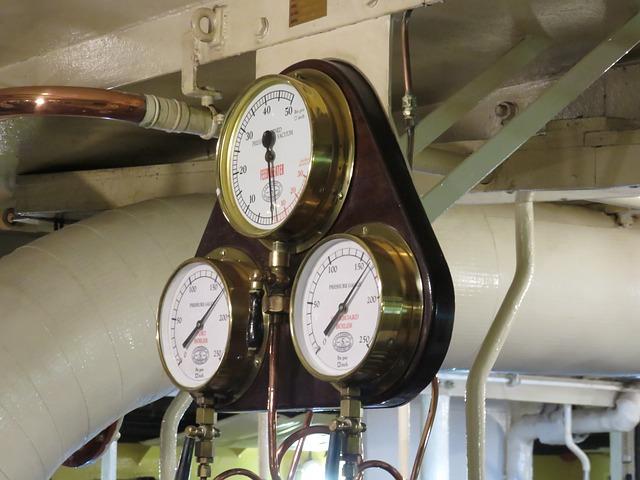Stress-testing the world nuclear system
Posted By Paul Bracken on January 23, 2018 @ 14:30

One innovation coming out of last decade’s ‘great recession’ was the stress-testing of banks and other financial institutions. The idea was for regulators to posit stresses to see how banks dealt with them. A range of destabilising events—a stock market crash, massive default, fraud or cyberattack—were simulated to look for the weak banks. That necessarily led to assessing how one institution’s failure could drag down others. That, after all, is how the crisis broke out. Lehman Brothers failed and so couldn’t pay the other parties that it owed money to.
Stress-testing should be applied to the second nuclear age. The second nuclear age is the international system that results from the spread of nuclear weapons for reasons that have nothing to do with the Cold War. All the elements of that definition are important for understanding stability in today’s world. It’s a nuclear system in that these weapons didn’t disappear after the Cold War ended. Most of the major powers in the world today either have nuclear weapons or are protected by allies who have them.
That this situation has nothing to do with the Cold War is another important element. The current system doesn’t have the tight discipline of the Cold War blocs. Most NATO countries, for example, disagree with the US and oppose rewriting the nuclear agreement with Iran. Likewise, Beijing and Moscow have little control over North Korea or Pakistan.
If you think about it, there are a lot of other similarities between financial stability and nuclear stability. In both cases a problem in one institution could trigger a cascading sequence of reactions in others. One mechanism for that is command and control. Suppose the US postured for a strike on North Korea. China, and likely Russia, would have to react to protect against a US attack on their nuclear forces. The US, for its part, would face the strategic uncertainty of how Beijing or Moscow would react to an American strike on North Korea.
It’s all well and good to argue in peacetime that they wouldn’t do much. But that unexamined assumption could be short-sighted in the extreme. We know from history that there was tremendous uncertainty in the national capitals of Europe in the crises that led up to the two world wars. The difference now is that with nuclear weapons so dependent on warning and electronic networks, a mistake could quickly flare up into a good-sized war. After all, national nuclear forces have never been tested on high alert all at the same time. That’s a distinctive change from the Cold War to the second nuclear age.
Another key point to glean from the stress-testing of banks is that the purpose of the exercise isn’t prediction. It’s about insight. The 2008 financial crisis demonstrated that political leaders and regulators didn’t understand their own financial systems. That applies with even greater force to systems like nuclear command and control. While we had some experience with two-party nuclear crises in the Cold War, the situation today is much different. The command systems surrounding nuclear weapons are clearly different from what existed during the Cuban missile crisis. More fundamentally, the fact that there are so many more nuclear actors today radically changes the crisis dynamics. It wasn’t the failure of one bank that caused problems. It was that banks had integrated with one another in complicated and subtle ways which no one understood that caused the unexpected scale of the financial crisis. Yet we still talk about nuclear stability as if it were the linear addition of the control systems put in place by individual countries.
Stress-testing nuclear systems would also help to start a badly needed conversation about what arms control should look like in this second nuclear age. The big insight from the financial crisis was that the risk appetite of banks needed to be constrained. That was done by an international consensus and agreement to increase the capital requirements on banks, in effect limiting how much they could lend out or trade on their own account.
For the world nuclear system, an agreement that ‘a regional nuclear crisis stays in the region’ could isolate or limit a crisis by having the major powers recognise that they had a powerful shared interest to put a cap on a bad situation. So even if a small nuclear state took crazy actions, the repercussions might be limited to only one region. I’ve argued [1] that this should be one part of a larger, emerging great-power arms-control system.
Better understanding of nuclear stability in a multipolar world is an extremely important subject. Without a more sober consideration of it, the trajectory of the second nuclear age will continue to be based on mutual deterrence. But, as in the financial crisis, the problem is a lot more complicated than mere self-interest. By itself, that wasn’t enough to avert the great recession. For a second nuclear age, the consequences could be a lot worse.
Article printed from The Strategist: https://aspistrategist.ru
URL to article: /stress-testing-world-nuclear-system/
URLs in this post:
[1] I’ve argued: https://us.macmillan.com/thesecondnuclearage/paulbracken/9781250037350
Click here to print.